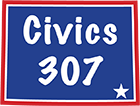Each biennium, the Governor submits the Executive Branch budget to the Legislature as the starting point for their consideration. This document recommends the approval for each Department by Division, Object Series and Sources of Funding. The number of employees for each division are also identified for approval. In 2018, the total was $8.1 billion. Summary Pie Charts breaking down the total by Department overall and within each Fund Source are available under Files. https://www.civics307.com/bill-tracker/
For the Department of Administration and Information (A&I), Divisions include Professional Licensing, Budget, Construction Management, Employees Group Insurance as examples. Object Series break the same total down by how the funds will be used such as personal services, grants & aids payment, non-operating expenditures and contractual services. The Sources of Funding are the the three funds shown in the graph above. These are General Fund, Federal Funds and Other Funds. Other Funds include Special Revenue Funds, Enterprise Funds and Trust Funds. In A&I, the primary use of Other Funds is in Employee Group Insurance and Construction Management.
The “sausage making” process of budget approval through the Joint Appropriations Committee begin in December preceding the Legislative Budget Session and continues through the early days. Upon approval by the Joint Committee, mirrored bills are introduced into each chamber. These bills inevitably drift apart as amendments on second and third reading are introduced, considered and acted on. In the House, there were 61 amendments on 2nd reading and 52 on 3rd reading. Of those, 30 were adopted. In the Senate, 28 were adopted from the 38 on 2nd amendment and 25 adopted from 35 on 3rd amendment.
A joint conference committee is established to reconcile the two versions of the bill. In the first conference, only those changes made to the original bill are considered. If the resulting amendments are approved in each chamber, the bill from the House is sent to the Governor for approval. If not, a second conference committee is established and the entire bill can be considered.
Wyoming provides for the Governor to make line item vetoes in the budget bill submitted. If this occurs, those vetoes and the reasoning behind them are provided in a letter back to the Legislature. Each veto requires a 2/3 affirmative vote of the elected individuals in each chamber to override. That is, both chambers must obtain the needed votes on each veto. The results of any overrides are restored into the budget which is then finalized.
The final approved budget is entered into statute as a Chapter. In the case of the 2019-2020 biennium budget from the 2018 Session, this became chapter 134. The budget as approved can be found at https://www.wyoleg.gov/2018/Chapter/Ch134.pdf.
#WyoBudget, #GovernorBudget, #biennium, #LegislativeBudget, #WYappropriations
